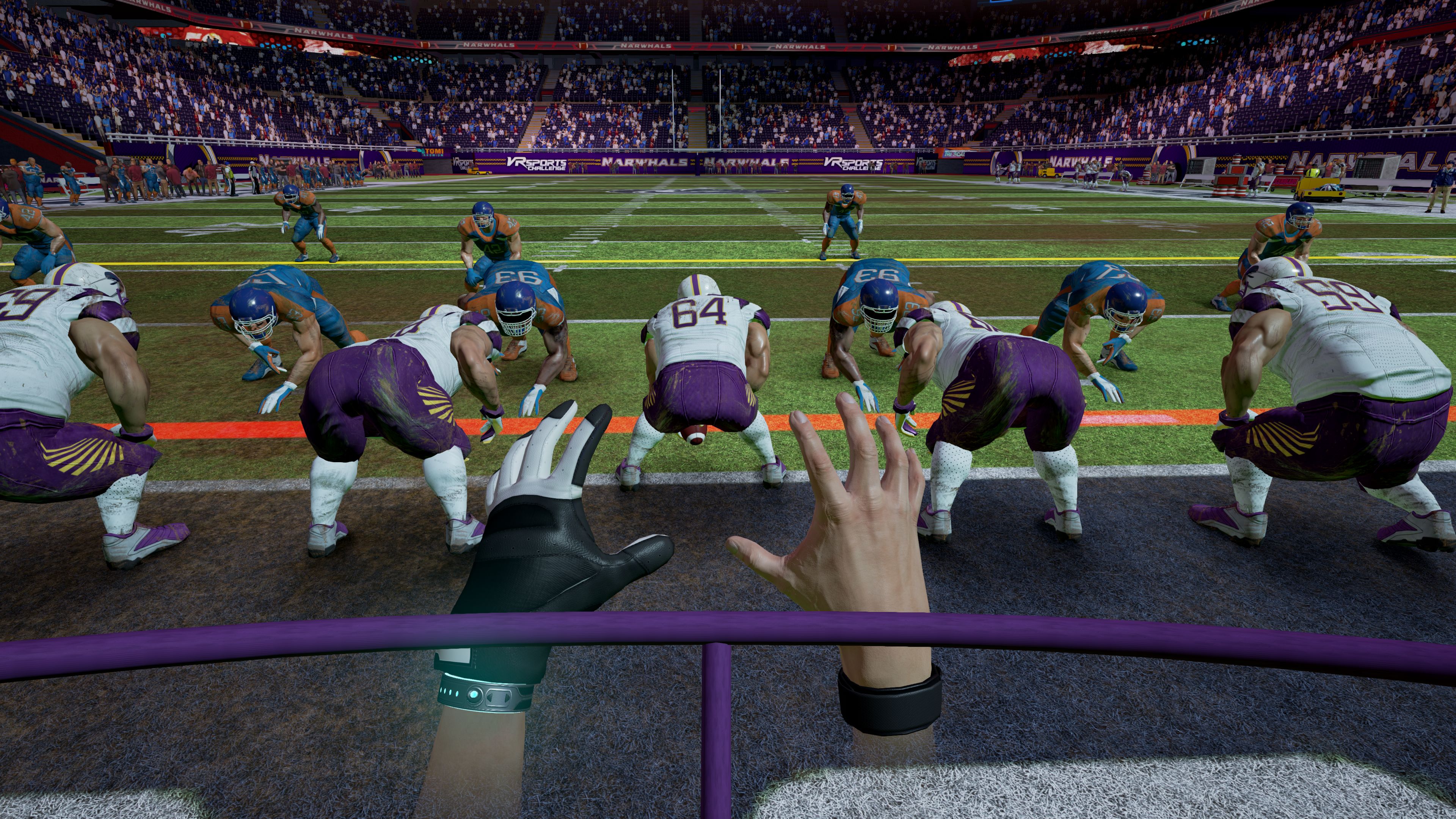HTC Vive vs Oculus Rift: which VR headset is better?
Getting real with virtual reality headsets comparisons

Update: Now that the HTC Vive price is at an all-time low, has the headset finally encroached on one of the Oculus Rift's strongest selling points?
We've got a complete breakdown of how the HTC Vive price compares to the cost of Oculus Rift. We've also thrown in PlayStation VR, the other top VR headset on the market, for good measure.
Here's a teaser: while Oculus Rift continues to be cheaper than HTC Vive, you still have to factor in the cost of building or purchasing a VR-ready PC (for both headsets).
Some more good news came in for Oculus Rift a few weeks ago when the latest Steam hardware survey revealed the headset overtook HTC Vive among users for the second month in a row.
The opt-in survey is by no means a comprehensive look at everyone who's using a VR headset, but the survey suggests that Oculus Rift is gaining ground on HTC, which up until recently was consistently the top headset in the survey.
Original article continues below...
HTC Vive vs Oculus Rift. It's a two-year-old VR battle that's seen some new contenders arise to challenge for the crown, but for many shoppers, the choice still comes down to Facebook's VR headset or the one made by HTC.
Sign up for breaking news, reviews, opinion, top tech deals, and more.
The answer to which headset is better ultimately depends on a range of different factors – from the types of immersive experiences you're looking for to the amount of cash you're willing to spend. Each headset has its own set of pros and cons, as well as different price points.
The story for the top two VR headsets is a compelling one, so before we break down design, specs and price, let's revisit how the HTC Vive and Oculus Rift got their starts.
Find out if your PC rig is ready for VR!
How it all began
Oculus Rift's story began as an ordinary Kickstarter project, but within a few years the company was snatched up by Facebook for $2 billion. Now, Facebook has thrown its considerable weight behind Oculus Rift, convinced that virtual reality is the future of social interaction. The social network certainly put its money where its mouth is.
Oculus Rift also has the backing of storied game makers, such as legendary video game programmer (and co-creator of Doom) John Carmack. However, notably the creator of the Rift, Palmer Luckey, left his passion project behind in favor of a more elusive venture.
Oculus and Facebook aren't stopping with the Rift, either. The companies also announced the Oculus Go in late 2017, a cheaper standalone headset that doesn't require a smartphone or tethered PC to run. There's also a much more robust standalone headset in development, called Project Santa Cruz. Though we've tried this device out for ourselves, it remains shrouded in mystery.
Despite the emergence of these new headsets including the imminent release of Oculus Go, Oculus Rift remains the star product in the Oculus and Facebook VR line.

HTC Vive, meanwhile, comes from the minds of two notable tech companies, one known for its hardware and the other for software.
HTC has created some of the most critically and commercially successful smartphones and tablets, while Valve is a long-time ally of PC gaming fans with Steam, a PC gaming client neatly packed with the Vive in the form of Steam VR.
HTC Vive has seen a few add-ons over the years, such as the HTC Vive Tracker, and though there were plans to create a standalone HTC headset that ran Google's Daydream VR platform, those plans fell through. HTC did launch the Vive Focus standalone headset in China.
Things really got shook up, however, when HTC unveiled the HTC Vive Pro in January 2018. The key upgrade here is a much sharper screen resolution. That upgrade comes at a cost, though, as the HTC Vive Pro price is $799 / £799 (about AU$1,015).

While both the HTC Vive and Oculus Rift have introduced new models, the original and most well-known headsets still have top billing (at least, for now).
Despite permanent price drops, both headsets are sure to set you back a considerable amount of dough, so you're likely only going to be able to afford one. So, who wins the battle of HTC Vive vs Oculus Rift? Let’s find out.
Hardware
Both the HTC Vive and Oculus Rift successfully offer expansive video game worlds and out-of-body experiences within your living room, and that's because the technology backing them up is similar in a lot of cases.

The all-important displays are everything your mother warned you about when she said not to sit too close to the TV. That’s right, your eyes are just inches away from two OLED panels boasting a combined 2,160 x 1,200 resolution. As a result, each eye gets its own 1,080 x 1,200 resolution display to mindlessly gaze at.
With a 90Hz refresh rate on both headsets and asynchronous spacewarp on the Rift for 90 fps VR, this means there are 233 million pixels flying at your face every second, making for a grown-up VR experience versus the 60Hz Samsung Gear VR.
HTC Vive and Oculus Rift also have a wider 110-degree field of view (measured diagonally). This causes the virtual reality world to feel as if it truly wraps around your head.

You're not going to be able to break free of the required computer, though, as both headsets have to be tethered to a powerful computer with a smorgasbord of cables in order to function. Luckily, that may not be the case for long, as Facebook revealed the PC-less Oculus Go and Project Santa Cruz headset, with the former launching sometime in 2018.
For Oculus Rift fans, Project Santa Cruz is an honest-to-goodness wireless VR headset or, as Oculus describes it, an ‘all-in-one VR device.’ The cameras are built into the device, too, since Santa Cruz has an example of what’s known as inside-out tracking. This gives you a fully 360-degree VR experience without the need for any cables whatsoever.
Also important to bear in mind is that that are 37 sensors in the Vive headset providing fluid, seamless movement, while there’s also a front-facing camera that makes a world of difference. It’s not clear whether all of these facets, which ensure accuracy and precision, will be replicable in a VR headset that’s completely wireless.
HTC's camera also allows for a Chaperone safety system, which fosters room-scale VR within a 15 x 15 space by casting a blue outline on walls and objects established by the Lighthouse sensors when you get too close. What’s more, you can turn it on for a Matrix-like look at everything at once.

At the same time, third parties like Intel are designing additional camera add-ons for the Vive that allow for improved hand-tracking and real-time environment scanning to avoid walking into obstacles. And, with Valve having made its tracking tech royalty-free, more developers will be able to create similar accessories for the Vive.
Oculus Rift doesn't have a camera on the front of its headset for augmented reality vision, but you can buy an additional $79 (about £63, AU$104) sensor that enables room-scale VR comparable to that of the HTC Vive. Until earlier this year, that option was in beta, but now Oculus fully supports sitting, standing and room-scale VR.
Design and comfort
Your gateway to other worlds is through a VR headset strapped to your noggin via adjustable Velcro. It's the ski mask of a dystopian future with no clear visor, although you can see so much more.

This is where the Oculus Rift vs HTC Vive differ the most, actually. While both are comfortable enough with face padding and are lightweight, there's definitely more heft to the Vive.
Oculus Rift is a bit more refined looking with a compact design that amounts to a big, black brick sitting against your face. There are lightweight headphones that are thankfully removable, though these can be swapped out for a $49 pair of earphones that “sound like they cost $900,” according to Oculus.
HTC Vive is bespeckled with 37 visible sensors, and while it's otherwise black like the Oculus, it is noticeably larger. It looks almost as if the Oculus headset has had a puffy allergic reaction.

And though we said Vive is lightweight, it's technically heavier at around 555g without headphones included. Oculus is 470g by comparison and throws in headphones.
That bigger size and weight does have advantages: a lens distance knob moves the Vive lenses further and closer to your face. This is a helpful extra for people who wear glasses. Oculus Rift supports glasses, too, but the headsets doesn't have this handy adjustment knob for good measure.
Neither VR headset requires a phone, like the Samsung Gear VR, but HTC Vive does connect to your phone via Bluetooth for answering calls and messages. You can really wear it all day, but we don’t recommend it.
Controllers
Stepping into virtual reality is surreal enough, but it really becomes a tangible world when you can reach out and seemingly feel the VR environment with controllers.
Wielding the Vive wands puts our hands into the game virtually, and we've experienced the same with the Oculus Touch. Both sets of controllers allow for next-level immersion as you can move your arms around and see controller inputs mimicked in VR.

Both the Oculus Touch and HTC Vive controllers are included with each headset in the box, so you don't have to buy them separately to get started.
The Oculus Touch moon-shape controllers are smaller than the Vive wands, but both are comfortable in the hand. Both controllers take a little getting used to as you have to feel the button positions by touch, but after awhile, gaming with the controllers is pretty natural.

Neither set is weighty, and after awhile, you more or less forget you're holding something in your hand. That is, until you fail to grab a VR object just right and have to try repeatedly to pick it up.
Additional controllers besides the two you get in the box do cost extra. For HTC Vive wands, you'll pay $129.99 (about £90 / AU$170) for each additional stick you buy. With Oculus Touch, you'll pay $69 (about £50 / AU$90) for an extra controller (available for either the right or left side).
- Need something to play? Here are the best VR games to date
Gabe Carey has also contributed to this article
- 1
- 2
Current page: Hardware, design and controllers
Next Page Games, system requirements, price and conclusion
